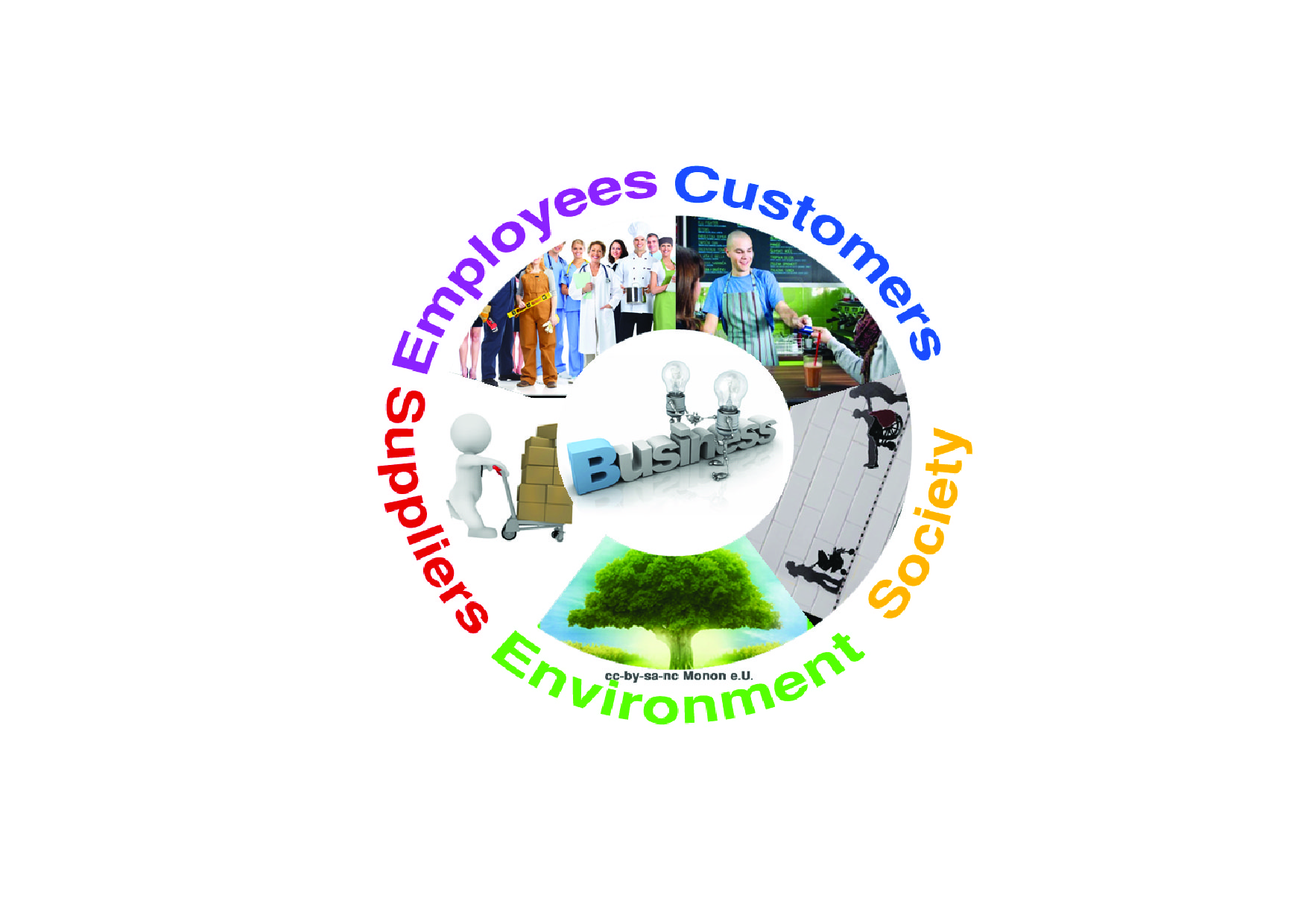During my work with start-ups, I have observed two different approaches to developing a business plan for a social business. One group follows a traditional approach and focuses on economic processes. There is a risk of losing sight of the organization’s actual public benefit-oriented purpose. Business plans of this type are often detailed in terms of production processes, products and marketing strategies. However, a critical examination of the profound social impact is often missing. If the complex relationships between people are reduced to purely economic transactions, the potential for change that a social business can offer is severely limited.
The other group of founders deals intensively with the complexity of a social business right from the start. However, this group risks being overwhelmed by the diverse requirements: democratic workplace design, cradle-to-cradle production processes, socially responsible pricing, environmentally friendly distribution channels and much more. Trying to cover all of this at the beginning with a financially stable budget and often limited resources often leads to a reality shock and can result in demotivation.
Why does it help to know the social business types?
The definition of social business types can help both groups of founders to manage the complexity at each stage of the start-up. This categorization helps to focus on the essential aspects of the underlying social problem and shows in which areas a social business should excel from the outset in order to be recognized as such. At the same time, knowing your own social business type helps to identify areas where more sustainable behavior is desirable but not essential to achieve the desired change.
Based on the theory of the Economy for the Common Good, which focuses on touch groups, as well as Kim Alter’s Social Enterprise Typology, I have developed an easy-to-understand framework of five social business types. These five social business types, which are described below, are all located in the B2B sector and are primarily defined by the target groups on which they focus their efforts. According to many authors (such as Yunus and Alter), a social business is primarily mission-centered. This means that the main goal is to improve the situation of a specific social group, which I will refer to here as beneficiaries. The primary difference between the social business types therefore lies in the way in which these beneficiaries are involved in the organization’s processes or, in the words of the Economy for the Common Good, which contact group the beneficiaries belong to in the (future) social business.
Work with the Cause Canvas – your tool for developing an effective social business!
Do you want to apply the five social business types to your idea or structure your impact concept?
Then grab the Cause Canvas – a collection of practical worksheets to help you gain clarity and find focus.
📩 I’ll swap the canvas for your email address – and occasionally send you invitations to suitable online events or new social business content. Of course with double opt-in and you can unsubscribe at any time.
Type A – customer-oriented social business
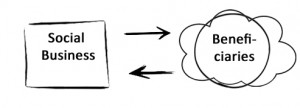
The first type, Type A customer-oriented social business, focuses on a target group that uses or otherwise consumes the products or services produced by the organization. This group, which for the sake of simplicity I call customers in the following, is not only directly influenced by the consumption of the product, but also indirectly by when, where and in what form they have access to these products and services, how they may be packaged and whether the packaging can be returned, whether this product satisfies fundamental needs and to what extent its consumption promotes a sustainable and healthy lifestyle.
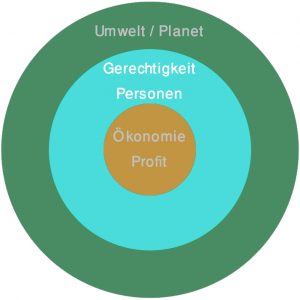
To summarize: in a customer-oriented social business, the aim is to have a positive impact on the life situation of customers (or their family members in the case of children, for example) or to reduce or solve their problems by providing products or services. Particularly in the Global South, the customers in such a social business are often from low-income groups and the aim of the organization is to support these families in satisfying basic needs. Max-Neef describes the topic of satisfying needs and basic human needs very well with his approach to basic human needs.
A type A social business refers to the social dimension of sustainability, making this social dimension the core element of its essence.
Type B – employee-oriented social business

The second type, Type B employee-oriented social business, focuses on the employees, workers and, to a certain extent, the working partners or cooperative members of an organization. In short, everyone who earns their living by making their working time and labor (not the product of their work, which would be type C) available to the corresponding social business. The (positive) effects of a social business cannot be reduced to the financial transactions between employer and employee, but are also constituted by the organization of working hours, possible involvement in decision-making processes, job security (in both senses of the word), training opportunities and much more.
While type A social businesses want to reach their target group by selling products to them, a type B social business tries to improve their living conditions by employing them. This does not mean that every organization that hires someone is automatically a type B social business. To argue that a social business is a Type B social business, one should, for example, hire groups that would otherwise find it difficult to find employment or involve employees in decision-making processes and profit distribution in a way that is far above the sectoral standard. Often if we take the former approach, we must assume that the business processes must be adapted to the requirements of the employees, such as planning special training (in the case of under-qualified workers) or adapting working hours or the workplace to their needs (e.g. if we focus on single mothers or visually impaired people).
Like type A, a type B social business relates to the social dimension of sustainability.
Type C – supplier-oriented social business

This third group of social businesses includes all those organizations whose focus is on improving the situation of suppliers of raw materials, products or services. Here too, not every company that purchases goods or services from suppliers is automatically a type C social business. Similar to the employee-oriented social business, such a social business is characterized by the fact that it works with vulnerable or not so strong target groups, i.e. small farmers or other small businesses that are often not so competitive due to their size and are therefore at risk of being exploited by larger buyers. A subcategory are social businesses that work with larger suppliers, but which in turn employ such disadvantaged groups. In both cases, a social business of this type should be characterized by standards that are clearly above those of the sector and also demonstrate a closer supplier relationship than a normal business.
The first group of type C social businesses is primarily concerned with the social situation of small suppliers (smallholders) and maintains contact with them that goes far beyond financial transactions through better networking, training and similar measures. My experience has shown that this category dominates in the economically less developed countries of the global South, where there are many small farmers without the necessary commercial know-how. The second category, which is predominantly found in industrialized countries, are production companies that have set themselves the task of producing commercially available goods in a more socially and ecologically sustainable way. This category is often a hybrid of Type C and Type D social business.
Type C social businesses focus on the social and environmental dimensions of sustainability from suppliers, with the focus on social aspects predominating in the first category in particular.
Type D – ecologically oriented social business
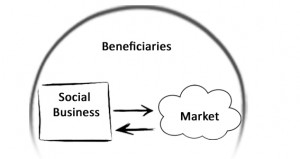
The fourth group of social businesses can be defined less by a particular group of people and more by the fact that ecological aspects are in the foreground and therefore everyone benefits from a healthier environment and less pollution.
Some social businesses of this type could be described as grassroots. Their approach is to achieve greater environmental friendliness by going back to the source: Using fewer raw materials overall and, if they do, using more local and seasonal ones (locally produced cookies from the baker rather than industrially manufactured ones, repair cafés) or developing new and more sustainable business models in the first place (such as the idea of food coops as an alternative to supermarket vegetables).
Still other type D social businesses rely on technology for their solutions to become more environmentally friendly. Some are working to better distribute and use resources more efficiently through internet platforms (e.g. sharing platforms) while others are inventing new machines or tools to circumvent the often unsustainable mechanisms of the dominant economy(Fairphone or Livin Farms).
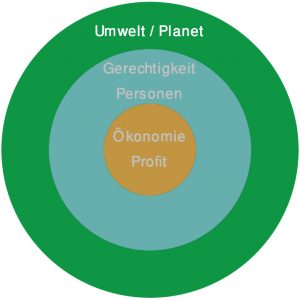
While the other four types of social business focus on the social aspect of sustainability (see Ayers), this type of social business focuses primarily on the environment or the planet. More resource-efficient production, waste avoidance and the promotion of sustainable lifestyles that reduce the ecological footprint of customers are at the forefront of such organizations.
In practice, many environmentally oriented social businesses are often mixed types in which a customer orientation (type A) or a supplier orientation (type C) is combined with the ecological aspects.
Type E – social business oriented towards the common good (or subsidy-oriented social businesses)
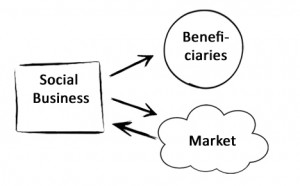
This last group refers to social businesses that cannot or do not want to involve the intended target group in the normal business process, but are in an emergency situation and need access to social services or certain goods. These groups are often characterized by the fact that they have neither the purchasing power nor the manpower to participate in the production or consumption cycle, such as children or people with severe physical disabilities.
In a Type E social business, a profitable (but of course ecologically and socially compatible) business is established (e.g. a restaurant) and operated. The monthly profits are put entirely (!) into (re-)investments in the business and the cross-financing of social activities. Transparency and democratic structures, which ensure that the money is used fairly, are the be-all and end-all of such a social business oriented towards the common good. This business model is increasingly found in countries where there is no welfare state or similar social democratic institutions that cover such tasks by redistributing resources. But Patagonia also uses this model
Work with the Cause Canvas – your tool for developing an effective social business!
Do you want to apply the five social business types to your idea or structure your impact concept?
Then grab the Cause Canvas – a collection of practical worksheets to help you gain clarity and find focus.
📩 I’ll swap the canvas for your email address – and occasionally send you invitations to suitable online events or new social business content. Of course with double opt-in and you can unsubscribe at any time.

